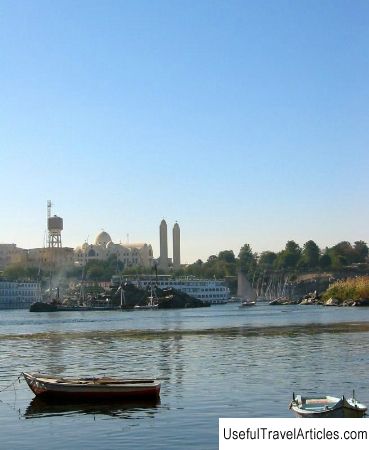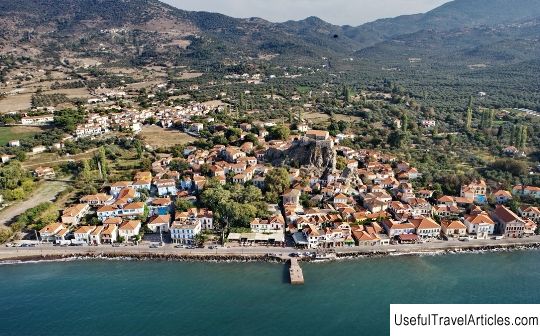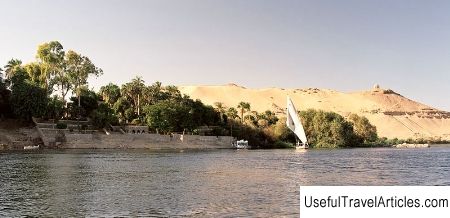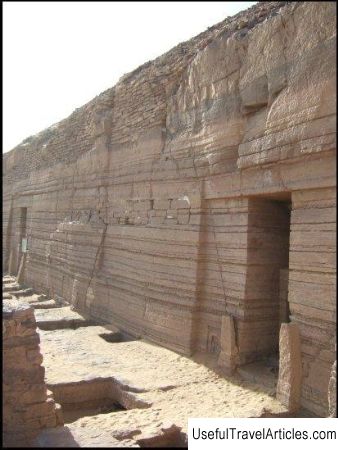Elephantine Island description and photos - Egypt: Aswan
Rating: 8,6/10 (309 votes) 
Elephantine Island description and photos - Egypt: Aswan. Detailed information about the attraction. Description, photographs and a map showing the nearest significant objects. The name in English is Elephantine Island. Photo & DescriptionElephantine Island is the largest in the Aswan area and a popular tourist destination in Egypt. This popularity was promoted by its location on the first rapids of the Nile, which served as the natural border between Egypt and Nubia. In the southern part of Elephantine there was a city that was connected to the mainland by a bridge. Elephantine - in Greek "elephant". In ancient times, the island and the city on it were called Abu, or Yabu, which also means "elephant". It is believed that the island got its name from the ivory trade. The second version of the origin of the name - in the river near the banks there are large boulders, from a distance similar to bathing elephants. The island is very beautiful, and although many of its sites are in ruins, there is still a lot to see. One of the main attractions is the nilometer, one of three along the river, it was used to measure the water level until the end of the nineteenth century. The ancient Egyptians used this sensor to assess the floods of the Nile in order to predict the level of flooding and estimate the amount of taxes for the upcoming harvest. A German archaeological institute has been excavating in the city for many years. Among his finds are the mummy of a sacred ram and the ruins of the Khnum temple. The island of Elephantine was the center of this cult, and the structure dates back to the period of Queen Hatshepsut of the 18th Dynasty. There are also the ruins of the Satet temple, the female counterpart of Khnum. These gods have been worshiped here since ancient times. The granite portals, the remains of the temple built by Alexander, are the only large structure that has stood the test of time. In front of it, which is oriented from east to west, around the fragments of columns from the period of Ramses II, the sidewalk leading to the Roman embankment has been restored. In addition, bakeries that have been used for several centuries have been discovered on the palace square of Elephantine. The production of bread was carried out on an industrial scale, as evidenced by thousands of bread molds and discovered ostracons with customer lists. On the northern outskirts, behind a modern Nubian village, are the remains of a small granite stepped pyramid, its exact purpose is unknown. The most significant finds from the search expeditions are placed in the Aswan Museum. The display includes mummies, weapons, ceramics, dishes and figurines. Elephantine Island can be reached by felucca or motorboat from any pier on the Corniche.       We also recommend reading Stirling Castle description and photos - Great Britain: Stirling Topic: Elephantine Island description and photos - Egypt: Aswan. |




